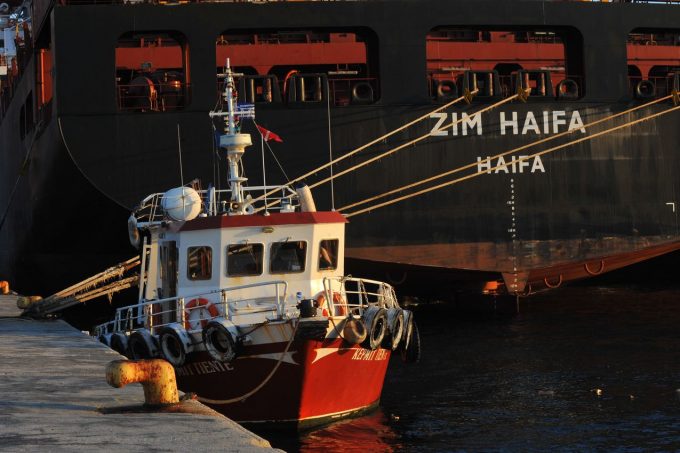Maersk appoints John Wetherell to head its global airfreight forwarding
Maersk has appointed John Wetherell (above) as its global head of airfreight forwarding. It is ...

Confidence would appear to be returning to the boardrooms of Asia-Europe shipping lines as container spot rates rebounded strongly this week, with an encouraging forward-booking outlook for the peak season.
The Shanghai Containerised Freight Index recorded a 37% jump in rates to North Europe, increasing the spot rate by $193 per teu to $720 – just $180 per teu below the level at the beginning of the year, before prices slumped uncontrollably.
And for Mediterranean destinations – where the rate erosion has not been as bad – the SCFI recorded a 22% hike in spot rates to $918 per teu.
It’s due to the influence of next week’s general rate increases (GRIs) by the carriers, a quantum of which will have been factored into the index.
The lines’ June GRI strategy differs markedly from previously: some carriers, such as OOCL are asking for a 1 June price rise for North Europe – in its case, $850 per teu – while others, such as CMA CGM, have opted for a two-tier approach with increases on 1 and 15 June of $450 and $500 per teu respectively.
And such is the renewed optimism over the return of a traditional peak season this year, that CMA CGM has also announced a PSS [peak season surcharge] for North Europe of $250 per teu to kick in from 6 June.
However, CMA CGM said the PSS would apply “only on quarterly named account deals”, suggesting that customers with, or who sign, annual contracts will not be liable.
Another factor driving spot rates up is the precarious financial position of many container lines, after a first quarter that saw only Maersk Line, of those that report their results, scramble a net profit.
And, according to liner contacts, with both South Korean carriers, Hyundai Merchant Marine and Hanjin Shipping, still teetering on the brink of bankruptcy, shippers have become less inclined to switch carriers for a $50 or less per box gain.
Elsewhere, the US components of the SCFI recorded marginal increases for spot rates to the west coast and east coast ports. West coast rates inched up $35 to $788 per 40ft and east coast prices rose $75 per 40ft to $1,622.
However, at the start of the year, east coast spot rates were recorded by the SCFI at over $2,500, but as carriers have increasingly targeted the trade and introduced more services and capacity, the price has tumbled.
The sharp decline in rates from Asia to the US east coast hit Israeli carrier Zim hard in the first quarter, according to its results released yesterday, as it reported a $56m net loss for the period, compared with a $12m profit in Q1 15.
Having had its fingers badly burned by intense competition on the Asia-North Europe trade, the restructured Zim withdrew from that market at the end of 2014 to “focus on opening new lines in profitable trade areas and seizing business opportunities”.
But despite having aggressively targeted the Asia-USEC route with the introduction in early 2015 of its Seven Star Express service, deploying ten 6,500 teu vessels, Zim saw its average rate per teu plunge 25% in the first three months of this year (versus the same period in 2015) to $943 per tea, slashing revenue by 20% to $630m.
It carried 577,000 teu in the period, a 3% increase on last year, despite a market growth of less than that.
“Our asset-light business model facilitates highly flexible and cost-efficient fleet management, which together with our pro-active optimisation and rationalisation of the company’s line network, proves crucial in the current market environment,” said chief executive Rafi Danieli said.
“Our strategic business plan, focusing on select markets where the company has a competitive advantage, aims at allowing ZIM to cope with the challenges faced by the industry.”
Comment on this article